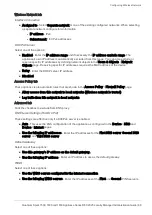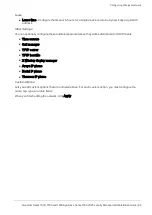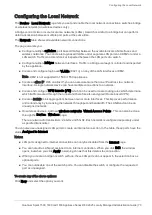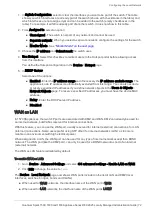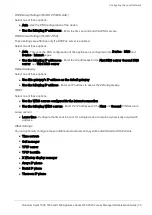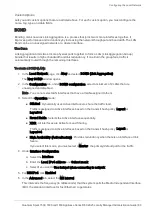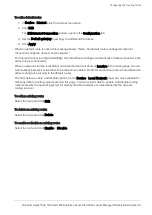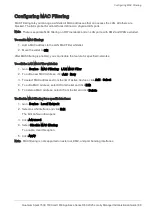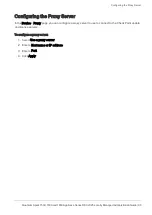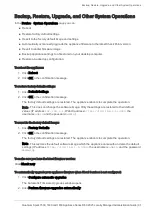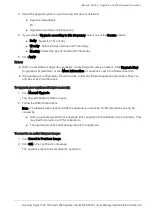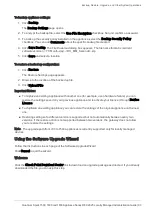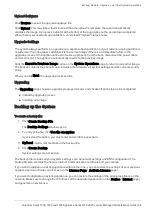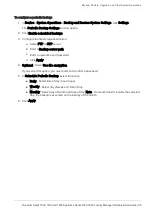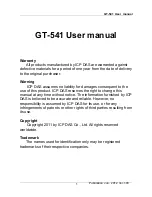
Configuring the Local Network
Quantum Spark 1500, 1600 and 1800 Appliance Series R80.20.25 Locally Managed Administration Guide | 80
Custom Options
Lets you add custom options that are not listed above. For each custom option, you must configure the
name, tag, type, and data fields.
BOND
Bonding, also known as Link Aggregation, is a process that joins two or more interfaces together. It
improves performance and redundancy by increasing the network throughput and bandwidth.The LAN
Bond can be an unassigned network or a cluster interface.
Use Case
Link Aggregation binds two or more physical ports together to form a LAG (Link Aggregation Group)
bundle that results in higher bandwidth and link redundancy. If one link in the group fails, traffic is
automatically routed through the remaining interfaces.
To create a BOND (LAN):
1.
In the
Local Network
page, click
New
and select
BOND (Link Aggregation)
.
The
New BOND
window opens.
2.
In the
Configuration
tab, under
BOND configuration
, select a minimum of 2 LANs that are
unassigned and disabled.
Note
– You cannot select LAN interfaces that have a VLAN assigned to them.
3.
Select the
Operation
mode:
n
802.3ad
– Dynamically uses Active interfaces to share the traffic load.
Traffic is assigned to Active interfaces based on the transmit hash policy (
Layer2
or
4
).
n
Round Robin
– Selects the Active interface sequentially.
n
XOR
– All interfaces are Active for Load Sharing.
Traffic is assigned to Active interfaces based on the transmit hash policy (
Layer2
or
4
).
n
High Availability (Active/Backup)
– Provides redundancy when there is an interface or link
failure.
If you select this mode, you must select a
Master
- the primary/default port for the traffic.
4.
Under
Interface Configuration
:
a.
Select the
interface
.
b.
Enter the
Local IPv4 address
and
Subnet mask
.
c.
Select if you want to
Use hotspot when connecting to network
.
5.
For
DHCPv4
, click
Enabled
.
6.
In the
Advanced
tab, select the
Mii interval
.
This interval is the frequency (in milliseconds) that the system polls the Media Independent Interface
(MII), the standard interface for fast Ethernet) to get status.



